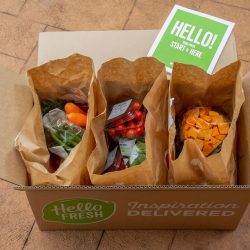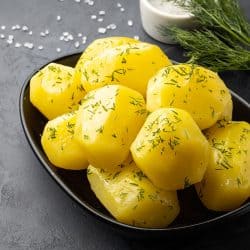Hello Fresh makes life simple by sending you all the ingredients you need to cook a full meal, but what if you need to store them? There are tons of ingredients inside, some of which you might not know how to put away. If that's your concern, we've made a guide for you!
Hello Fresh boxes include a wide range of products. From fresh meats to veggies, it's a lot of items to learn how to store. So, let's simplify the process:
- Pre-cooked ingredients go on the top shelf in the fridge.
- Raw meat, poultry, and fish should go in the coldest area of your fridge.
- Fruits and veggies will go in the crisper drawer.
- Condiments and juices go on the refrigerator door.
From what you can see from the information above, each ingredient requires a different environment; if you don't store them in a good spot, they'll go to waste. Of course, we want to avoid this. Otherwise, some meals will be missing an ingredient. To learn more on this topic, keep reading.
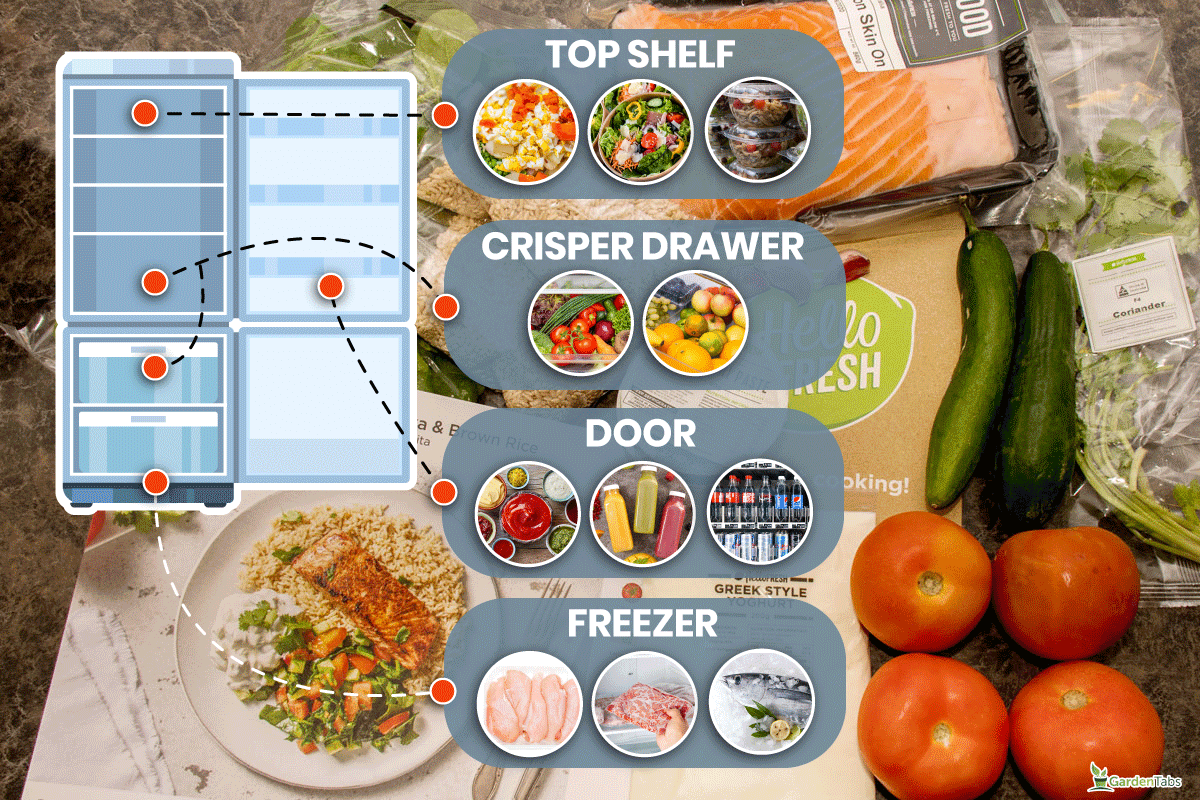
Storing Hello Fresh Ingredients
The fridge is the first appliance you'll probably consider if you want to keep things fresh. However, it's not that simple. While lower temperatures help preserve foods, the cold can be detrimental to others.
Let's start the guide with the foods you should avoid putting in the fridge.
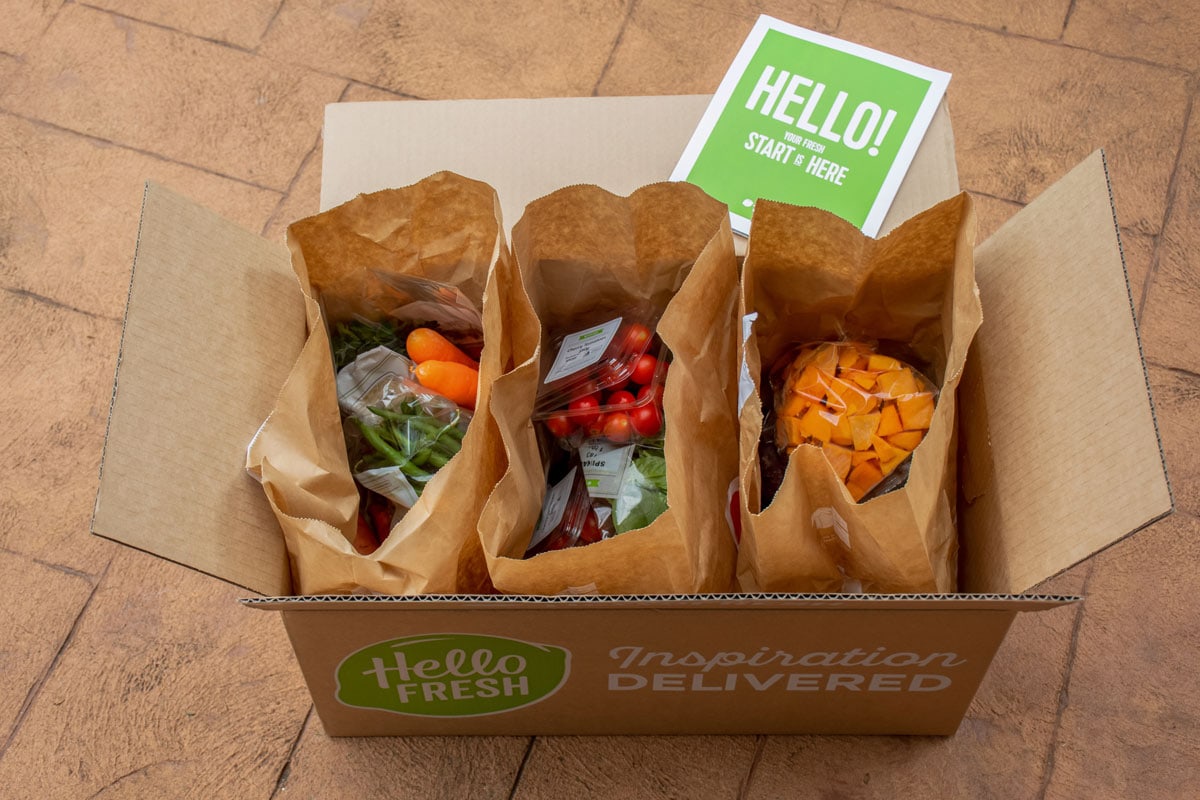
Foods You Want To Keep Out Of The Fridge
Luckily, there aren't many ingredients that can't handle cold temperatures. The few items that don't enjoy the cold air are:
- Tomatoes
- Fresh herbs
- Bread
- Potatoes
- Garlic
- Onions
- Avocadoes
- Oil
- Honey
It's easy to understand why some of these items shouldn't go in the fridge. For example, refrigerators tend to make bread stale. Other ingredients like garlic, potatoes, and onions don't react well with the cold.
Refrigerating potatoes is not recommendable because temperatures lower than 50 degrees Fahrenheit can alter their chemical structure. Instead, store them in a dark, dry place.
Onions and garlic, like potatoes, also enjoy similar conditions. However, never group them. Otherwise, they will spoil quickly from the gases they release.
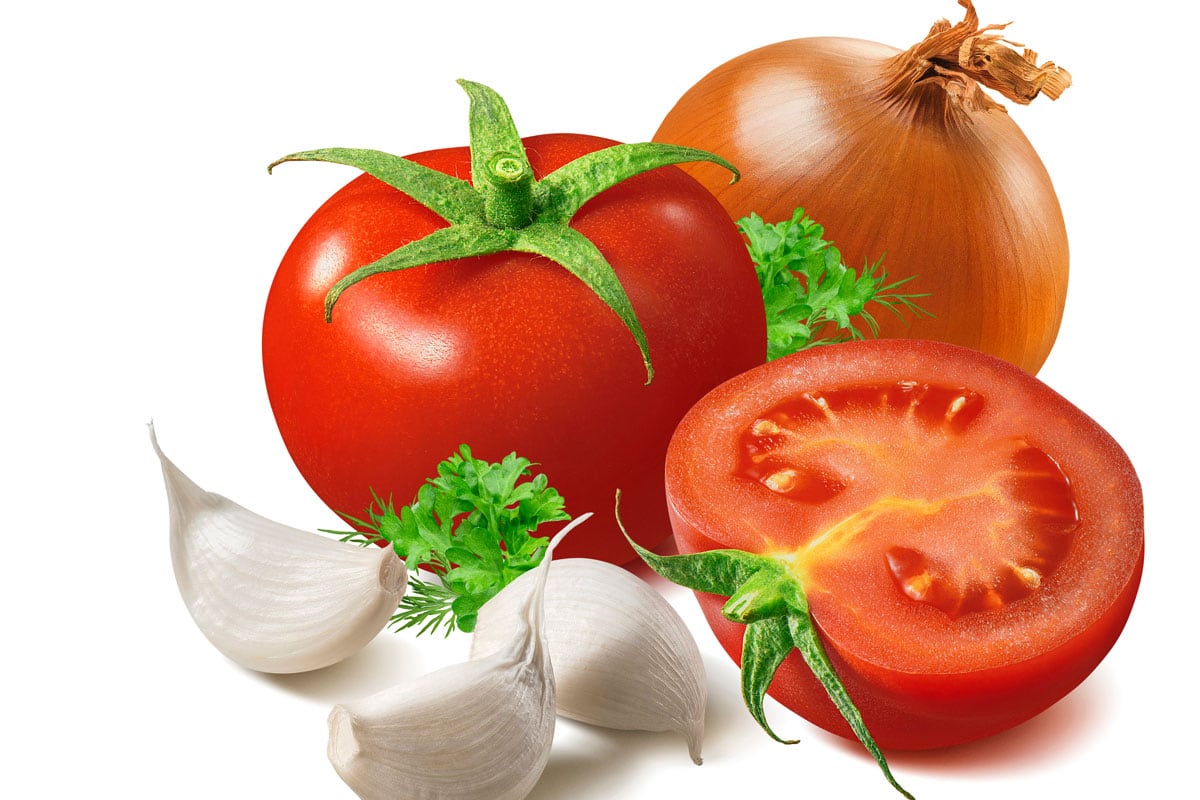
Avocadoes and Tomato
Storing avocadoes and tomatoes requires a bit more nuance. It all depends on their condition. Did you receive them unripe or ripened? The answer to this question determines how you should store it.
For tomatoes and avocadoes, color is one of the obvious cues. Nevertheless, the feel is also important. Both avocadoes and tomatoes will be firm but have a little give when pressed gently with a finger if they're ripe.
In this case, you'll want to keep them in the fridge to preserve them longer. However, if the tomatoes and avocadoes are still ripening, keep them at room temperature (68-72 degrees F). Once they're ripe, you can move them to the fridge if you haven't eaten them yet.
Keep them in the fridge when you can't provide a room temperature of 68-72 degrees F. It will slow down the rate they ripen, but it won't have too much impact.
All-in-all, the ingredients listed above should be at room temperature in a dark, dry place.
Items You Want To Keep In The Fridge
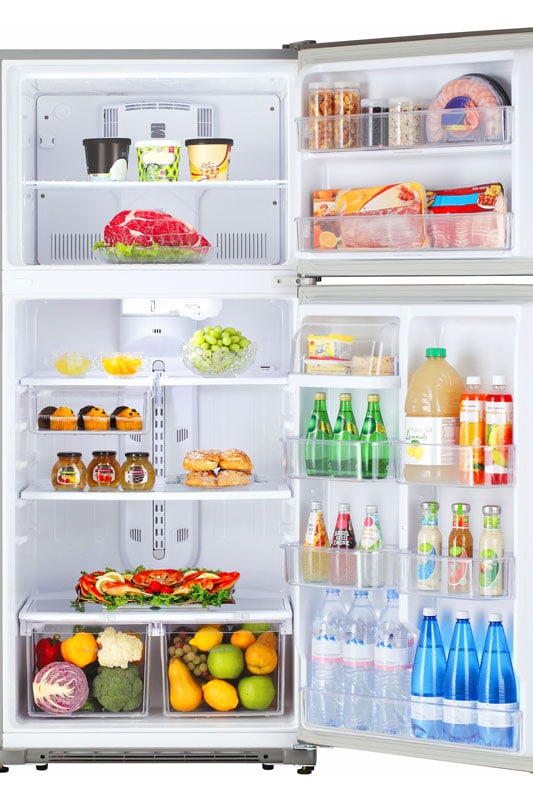
Now let's go over the items you should keep in the fridge. The foods you can preserve in the refrigerator are:
- Dairy products [cheese, milk, yogurt, etc.]
- Eggs
- Fruit
- Vegetables
- Meat and seafood
- Condiments
You can place these items in the fridge without second thoughts. Still, it never hurts to learn the thought process behind these decisions. Let's start by examining meat and dairy products.
Meat and Dairy
Meat and dairy are two products you want to keep a close eye on. If they spoil, it will be noticeable. Meat and dairy will change color and carry a terrible smell when they're no longer useable.
More importantly, placement matters for these two items. Since meat can spoil more quickly than dairy, you want to keep it on the bottom shelf in the fridge.
This way, you can avoid having the meat touching or dripping onto other foods. In other words, we're focusing on preventing cross-contamination. If you want to preserve it for longer, you can place meat, fish, or poultry in the freezer.
As for dairy products, they can go on the middle shelf; this area is cold but not as cool as the bottom. We don't want to freeze our dairy products. It just needs to be cool enough to avoid bacteria development.
Eggs can also go on the middle shelf of the fridge.
Pre-Cooked Ingredients and Snacks
The top shelf is where temperatures are slightly warmer. Though, that depends on the refrigerator. Regardless, the top shelf is where you want to keep all the pre-cooked ingredients and snacks.
So, fresh pasta, deli meats, and sauces are some items that would go here. Of course, keep the foods in their original containers until you're ready to use them.
If you've opened them already, cover them or transfer them into an airtight container to prevent cross-contamination. You may also place leftover Hello Fresh meals in this area if you can't finish the whole thing.
Otherwise, place your leftovers in a container and store them in the freezer for long-term preservation.
Condiments, Jams, and Juices
Condiments, jams, and juices typically contain preservatives to help them last a while. For this reason, they don't rely on the cold, but the cold helps preserve the quality.
Since they can handle temperature changes, you can place them on the fridge door.
Fruits and Vegetables
Finally, we reach the bottom compartment of the fridge; this area is called the crisper drawer. It's where you want to keep fruits and vegetables. Once again, the refrigerator you own matters here.
Some refrigerators have two crisper drawers—one high humidity and one low humidity. If you own a fridge with two crisper drawers, you can separate fruits and veggies based on the conditions they need.
Low-humidity crisper drawers should hold ethylene-emitting fruits. Some examples include:
- Pears
- Apples
- Melons
- Peppers
- Peaches
On the other hand, vegetables prone to wilting should go in the high-humidity crisper drawer. Some examples include:
- Broccoli
- Cucumbers
- Lettuce
- Leafy Greens
- Carrots
- Cauliflower
If the fridge only has one full-size crisper drawer, reserve that area for fresh produce. In other words, only vegetables will go in there. Otherwise, keep each product in a sealed bag.
This way, ethylene-emitting items won't have as much of an effect on the other produce.
Kitchen Cupboards
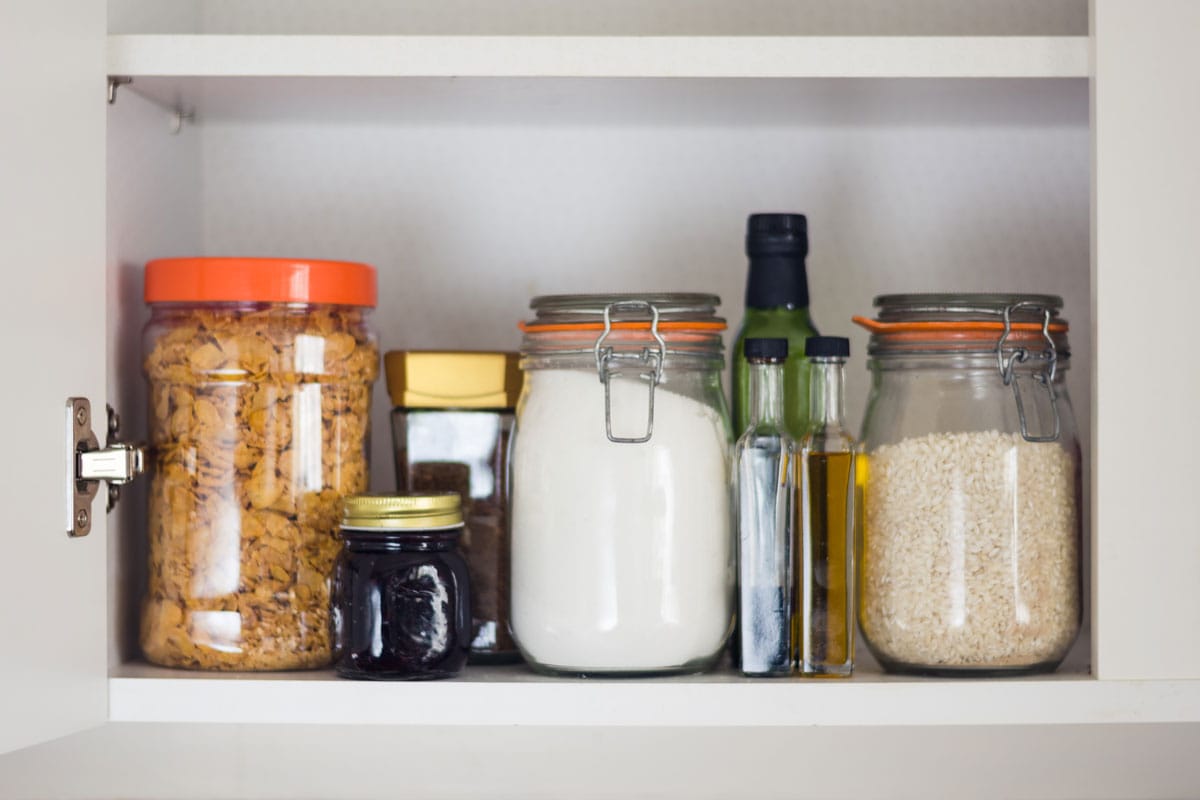
The only things left to store are dried ingredients; lentils, rice, and beans can go in your kitchen cupboards.
You can keep canned foods in this area too. In any case, now you should know where to keep certain ingredients.
Does HelloFresh Need To Be Refrigerated?
You don't have to worry if you can't store all the ingredients Hello Fresh sends you right away. Hello Fresh includes ice packs with their packaging. In addition, the box will typically contain insulation material.
This way, the box can maintain a consistent environment that resembles a refrigerator. So, all the ingredients can stay in the box for 24 hours. After these 24 hours, you will have to refrigerate some of them.
How Long Do Hello Fresh Meals Last in the Fridge?
Generally, Hello Fresh meals should last around 3-5 days in the fridge. Of course, this depends on the ingredients the meal uses.
If you need to make a dish that uses fresh ingredients, it's best to consume them as soon as possible. Meat, fish, and poultry usually last around 1-2 days.
It can last longer than this, but you'll need to use your judgment to determine if the ingredients are safe to consume. If you can't make the meals within 1-3 days, place the ingredients in the freezer.
In Closing
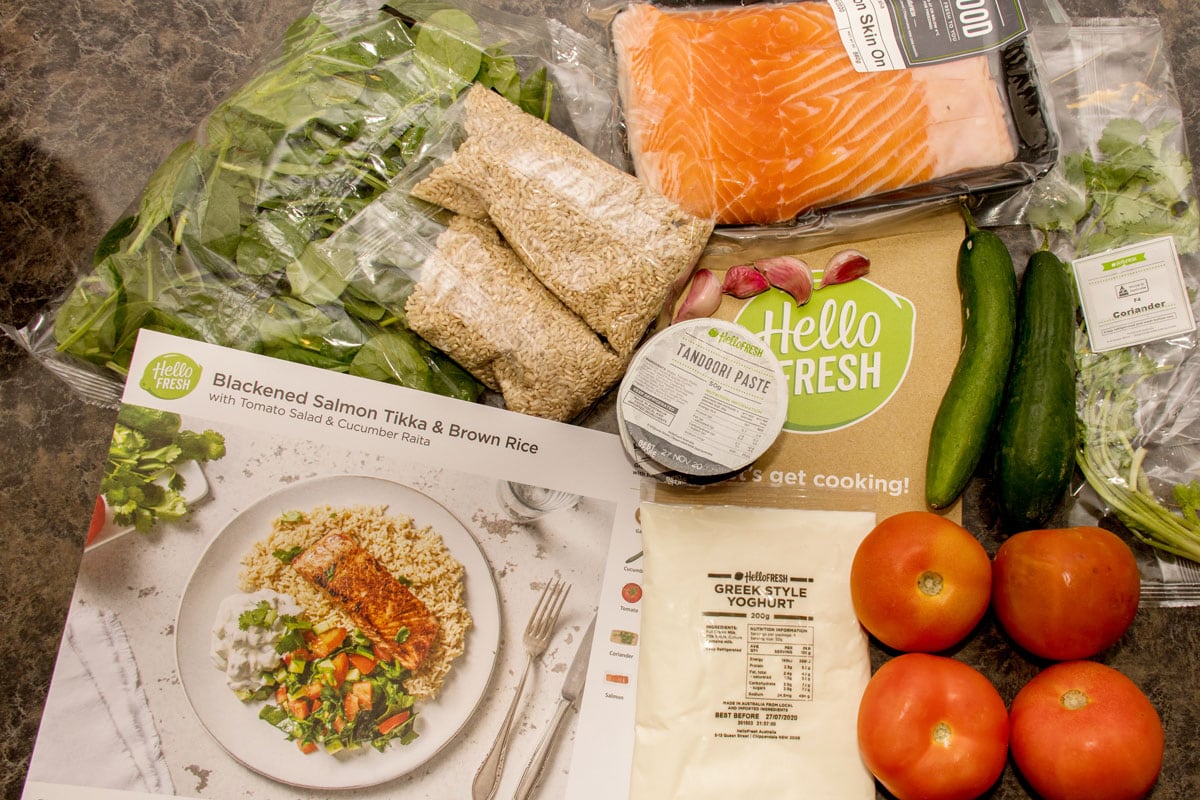
Storing ingredients doesn't have to be complicated. Once you get the hang of things, your ingredients will last. Did any of these tips surprise you? In any case, we hope you found this informative.
Before you go, do you have other Hello Fresh concerns? Do you need to leave it in the box for an extended period? We address some worries in our post:
How Long Does Hello Fresh Last In The Box?
Here are other topics you might want to read.
Can Onions And Potatoes Be Stored Together?
Is It Better To Store Food In Plastic, Glass, Or Stainless Steel?

![Mushroom champignon soup with bread and fresh mushrooms, How To Make Hello Fresh Cream Sauce [Quickly & Easily]](https://kitchenseer.com/wp-content/uploads/2022/12/Mushroom-champignon-soup-with-bread-and-fresh-mushrooms-250x250.jpg)
![Oven roasted cherry tomatoes. How Long To Roast Tomatoes [A Look At Various Factors & Considerations]](https://kitchenseer.com/wp-content/uploads/2021/08/Oven-roasted-cherry-tomatoes.-How-Long-To-Roast-Tomatoes-A-Look-At-Various-Factors-Considerations-250x250.png)

